The AV MBA: Using Basic Data Analysis to Drive Decision Making
 I’m in Business Development, or “Biz Dev” for short. It’s sometimes a difficult role to describe when people ask! I’ll take a stab at an answer…
I’m in Business Development, or “Biz Dev” for short. It’s sometimes a difficult role to describe when people ask! I’ll take a stab at an answer…
My job is to figure out and execute ways to improve the overall performance of a particular product or service. It’s not just about selling. Selling a product or service is an entirely different skill. I’m more of a facilitator. I’m interested in setting the stage to achieve incremental growth. It’s important that the sales team has a clear and simple understanding of what we are selling and what makes that product or service great. Additionally, helping a customer realize why a product or service is different and valuable in a competitive market and how it can solve their problems is key to the role.
 Finally, I want to be a champion for the vendor and help spread their message to the target audience. Data analysis is a critical tool that I must employ to achieve these objectives.
Finally, I want to be a champion for the vendor and help spread their message to the target audience. Data analysis is a critical tool that I must employ to achieve these objectives.
Now you may not be a Business Development Manager by title, but I promise you, if you work in a business, you are practicing Business Development on some level every day.
I love spreadsheets. One of my favorite things to do in my professional world is to sit down with a huge spreadsheet of random data, organize it, cut it up, isolate it, and find new, actionable pieces of information that I had no idea existed. You need some basic skills with spreadsheets and computing, but the real trick is asking your data the right questions. The program does all the heavy lifting, while I’m left with new insights that lead to more sound decisions.
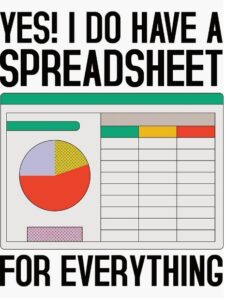 Armed with a few basic tools, I’m able to summarize trends and figures that answer questions like, “How can I be more profitable?” “What can I do to grow my revenue?” “Can I be more efficient by cutting out certain activities that don’t produce adequate results?” “Where should I focus my time for the greatest return?” And, perhaps most importantly, “what’s working and what’s not?”
Armed with a few basic tools, I’m able to summarize trends and figures that answer questions like, “How can I be more profitable?” “What can I do to grow my revenue?” “Can I be more efficient by cutting out certain activities that don’t produce adequate results?” “Where should I focus my time for the greatest return?” And, perhaps most importantly, “what’s working and what’s not?”
For this discussion, I’ve picked one of the most basic goals of all to showcase some examples of how I might use data analysis to formulate a plan to achieve it.
Goal: Increase Sales
To achieve any goal, we need to develop a strategy.
Start with collecting the data. To find out where we’re going, we need to first see where we’ve been! Let’s run a report of all sales for a given period (say the last 12 months). Got it? Great. Next step…
 Organize the data. What data are we interested in evaluating? Let’s look at customer name, location, revenue, profit, products sold, date (month). Next step…
Organize the data. What data are we interested in evaluating? Let’s look at customer name, location, revenue, profit, products sold, date (month). Next step…
Isolate the data. This is where we start getting creative. Let’s make a pivot table. This will allow us to pair up, parse out, and split our “big data” into “little data” (example: breaking down total annual sales revenue into monthly sales revenue).
Analyze the data. Our “big data” showed that we sold (revenue) $1,000,000 of product line X in the previous 12 months. That’s an average of $83,333 per month. However, our “little data” shows that we sold $500,000 in January and $0 in December. So, while our average (mean) sales were $83,333 per month, our median (middle number) and mode (most frequent number) were only $50,000 per month. With that in mind, our average sales don’t reflect our reality.
Draw conclusion. If we want to grow our sales next year, we need to sell more than $83,333 every month. As of now, we usually (mode) sell $50,000 every month. Therefore, we need to sell around an additional $33,333 most months to ensure that we grow our sales in the next 12 months.
Define strategy. To increase our sales, we can either sell-more-to current customers OR sell-to-more new customers. Let’s assume the market is flat and our salespeople are doing a great job servicing their existing customers. That means we need to sell-to-more new customers.
Thus, our strategy is defined, to increase sales, we must find new customers.
Select Tactics. This is the fun part. Here are some examples of tactics to find new customers:
- More Data Analysis – Going back to our report, what regions are the strongest and, conversely, where do we have opportunities to grow market share? Let’s focus on those weaker regions.
- Prospecting
- Outbound call campaigns

- Tradeshows
- Referrals
- Outbound call campaigns
- Marketing
- Advertising
- Email campaigns
- Social media content
- Increasing capacity
- Hiring additional sales personnel
- Upgrading CRM
- Outsourcing
After some discussion with the team, the desired tactics are narrowed down. It is decided that while adding salespeople would be preferred, it isn’t in the budget. So, our existing sales team will commit to setting aside time to call 10 prospects every week in underserved regions, and a sales contest is added to encourage activity. Additionally, there is enough budget in Sales to upgrade the existing CRM that will add a new tool that manages and tracks call campaigns, so the company elects to invest in that upgrade to support the sales team. And finally, Marketing has some budget available, and improving the company’s presence on social media will offer benefits beyond just sales, so a job post will be put online for a new Social Media Manager.
This is a very basic example, but it illustrates how an entire strategic initiative can be born out of analyzing data. I’ve included some links below to help you, and in the next edition, I will go into the art and skill of prospecting for new opportunities.

About the Author
Tom Keefe | CTS, DMC-D-4K, DSCE
Business Development Manager – Brand Specialist
Supported Manufacturers: Absen

 I worked for a company that had a product catalog 3 times the size of those old Sears catalogs from the 1980s. Inside, it had every little connector, cable, and electronic device you could possibly think of. As a new employee on the job, I was given this catalog as a “bible” to the job and told to “learn it.” Nonetheless, I was inquisitive as a new hire and would regularly ask my manager questions about what part was appropriate for the job I was working on. Without fail, my boss would always start his reply with “Rob, I know we have reviewed this,” before eventually guiding me on the solution. I would sit at my desk left to think how there was no possible way he had reviewed every part on every page in that catalog. To compound this even more, I had more than a decade of experience under my belt, so I came into the role with a decent foundation to start with. My mind then became trained to not go to that boss for future questions, because I did not like being made to feel as though I was always wrong or forgetful. While that experience did not completely eliminate my ability to ask questions, it certainly set me back some because, much like my daughter, became intimidated at the thought of asking because I didn’t want to be made to feel as though I was lesser or not good enough.
I worked for a company that had a product catalog 3 times the size of those old Sears catalogs from the 1980s. Inside, it had every little connector, cable, and electronic device you could possibly think of. As a new employee on the job, I was given this catalog as a “bible” to the job and told to “learn it.” Nonetheless, I was inquisitive as a new hire and would regularly ask my manager questions about what part was appropriate for the job I was working on. Without fail, my boss would always start his reply with “Rob, I know we have reviewed this,” before eventually guiding me on the solution. I would sit at my desk left to think how there was no possible way he had reviewed every part on every page in that catalog. To compound this even more, I had more than a decade of experience under my belt, so I came into the role with a decent foundation to start with. My mind then became trained to not go to that boss for future questions, because I did not like being made to feel as though I was always wrong or forgetful. While that experience did not completely eliminate my ability to ask questions, it certainly set me back some because, much like my daughter, became intimidated at the thought of asking because I didn’t want to be made to feel as though I was lesser or not good enough.
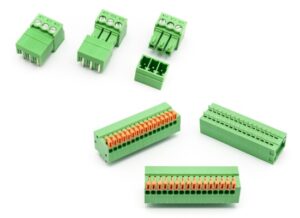 For me, I was always looking for the connectors on the cables to give me some sort of indication as to what signal they were sending, and to a certain degree they do. An XLR mic cable is GENERALLY used to for mic level audio, but not always. In many cases, there aren’t cable connectors at all, sometimes there’s just PHEONIX1 block connectors. Anyway, it became clearer to me when I learned that they’re all pretty much the same signal just at different voltage levels.
For me, I was always looking for the connectors on the cables to give me some sort of indication as to what signal they were sending, and to a certain degree they do. An XLR mic cable is GENERALLY used to for mic level audio, but not always. In many cases, there aren’t cable connectors at all, sometimes there’s just PHEONIX1 block connectors. Anyway, it became clearer to me when I learned that they’re all pretty much the same signal just at different voltage levels. So, really, an audio signal is just like a little
So, really, an audio signal is just like a little 

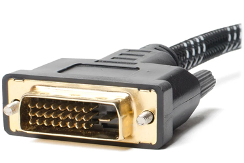

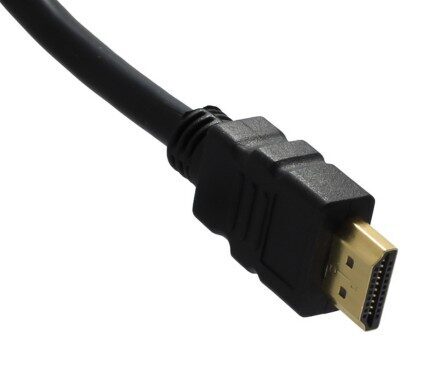
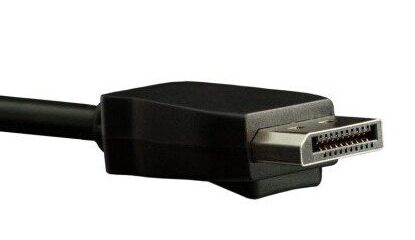

 Wall-Mounted Racks – There a few different uses here. Mainly, if you have smaller rack need…something like 8-10 RUs….it may be easier to access the gear for use or service by having it hanging off of the wall at eye level. Bending down or kneeling to get to the gear can be an unwanted nuisance, especially if the gear is being accessed routinely. Additionally, maybe you want to keep the gear away from small people with bad intentions – kids. Wall-mounted racks are used in classroom applications. Also, simply having the rack secured to the wall can save space in some locations and may help keep a cluttered closet a little more organized.
Wall-Mounted Racks – There a few different uses here. Mainly, if you have smaller rack need…something like 8-10 RUs….it may be easier to access the gear for use or service by having it hanging off of the wall at eye level. Bending down or kneeling to get to the gear can be an unwanted nuisance, especially if the gear is being accessed routinely. Additionally, maybe you want to keep the gear away from small people with bad intentions – kids. Wall-mounted racks are used in classroom applications. Also, simply having the rack secured to the wall can save space in some locations and may help keep a cluttered closet a little more organized. 2-Post Racks vs 4-Post Racks – Generally speaking, in AV applications, you won’t commonly use 2-posts racks. These are typically used in network-based applications with thinner patch panels and lots of wire management needs. 4-post racks are sturdier and can handle heavier AV gear like your amplifiers, DSPs, Mixers etc. Also, 4-posts racks can be more easily built into larger cabinets, which gives them additional options that may improve your system. Speaking of which…
2-Post Racks vs 4-Post Racks – Generally speaking, in AV applications, you won’t commonly use 2-posts racks. These are typically used in network-based applications with thinner patch panels and lots of wire management needs. 4-post racks are sturdier and can handle heavier AV gear like your amplifiers, DSPs, Mixers etc. Also, 4-posts racks can be more easily built into larger cabinets, which gives them additional options that may improve your system. Speaking of which…







